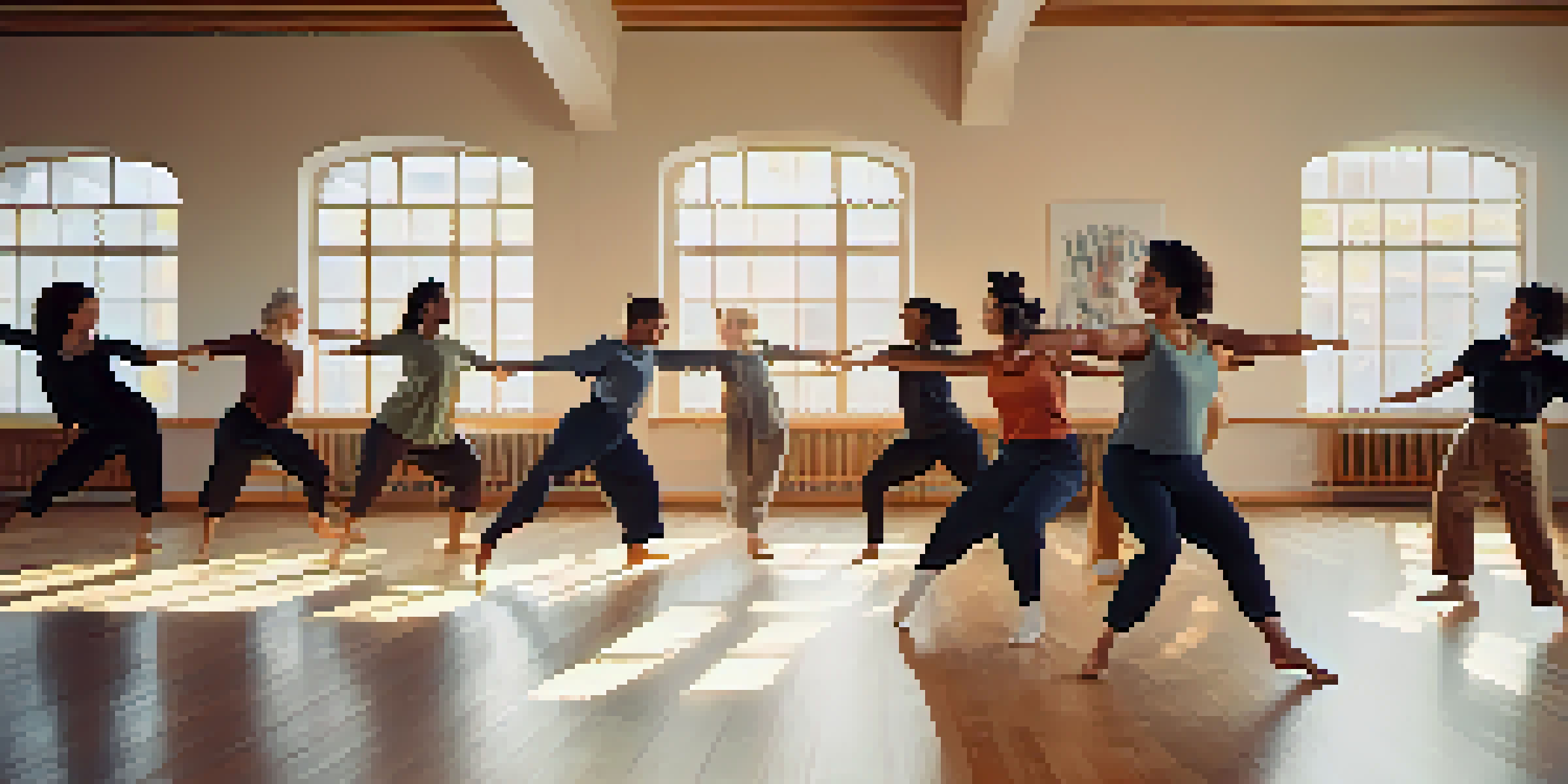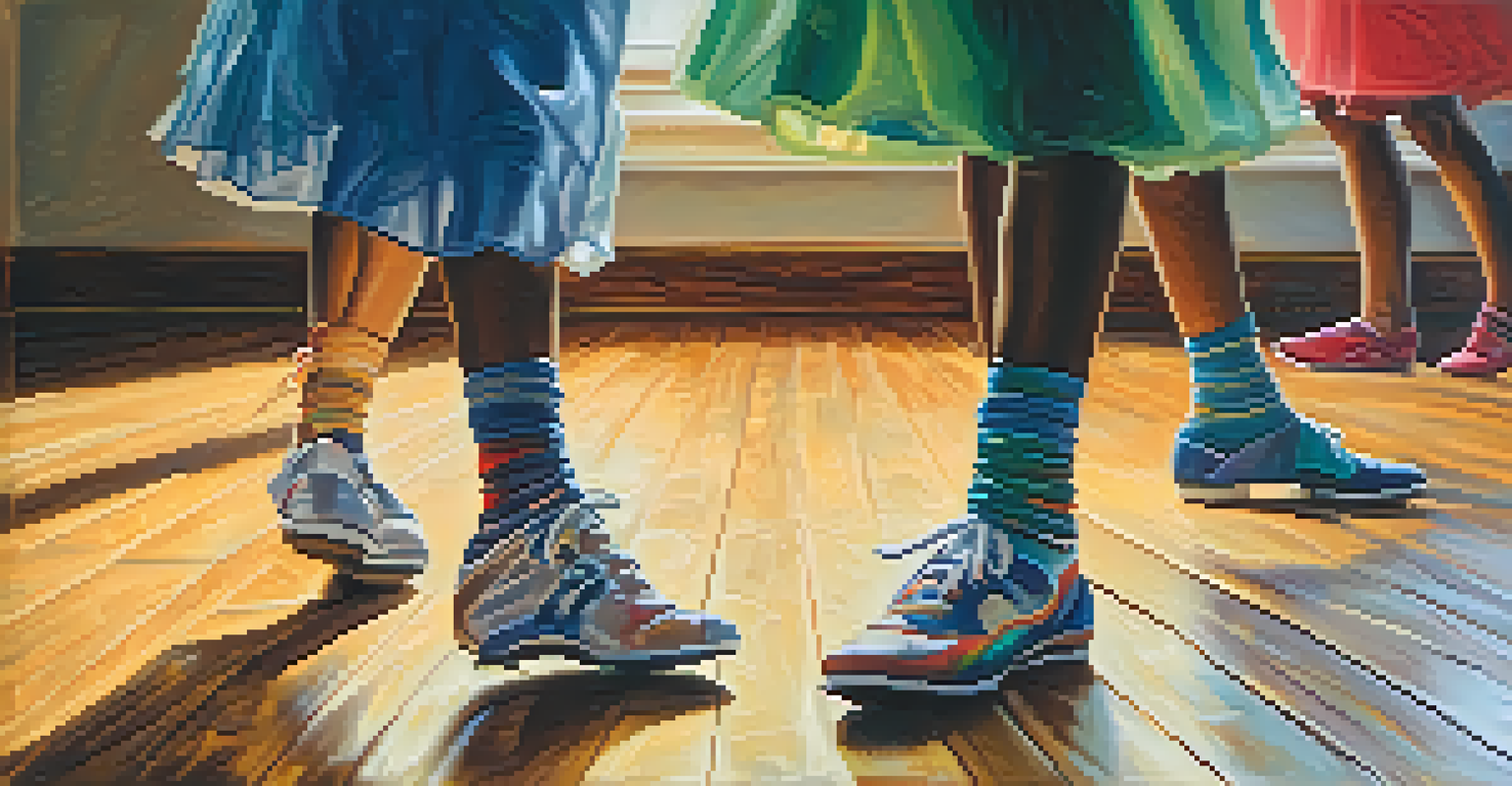The Benefits of Dance Therapy for Emotional Well-Being

What is Dance Therapy and How Does It Work?
Dance therapy, also known as movement therapy, is a form of expressive therapy that uses movement to promote emotional, social, cognitive, and physical integration. It’s based on the idea that the body and mind are interconnected; therefore, moving our bodies can help us express feelings and heal emotional wounds. Through guided dance and movement, participants can explore their emotions in a safe environment.
Dance is the hidden language of the soul.
Often facilitated by trained therapists, dance therapy sessions can vary in structure, from free-form movement to more choreographed routines. The goal is to release pent-up emotions and foster a better understanding of oneself. By tapping into the rhythms of music and the flow of movement, individuals can unlock feelings and memories that may be difficult to articulate verbally.
This therapeutic approach is beneficial for a wide range of individuals, including those dealing with trauma, anxiety, and depression. The freedom to express oneself through dance can lead to significant breakthroughs in emotional healing and self-discovery.
Enhancing Emotional Expression Through Movement
One of the most powerful benefits of dance therapy is its ability to enhance emotional expression. Many people struggle to articulate their feelings, and dance provides an alternative outlet. The fluidity of movement allows individuals to convey emotions that might remain trapped within, facilitating a deeper connection to their inner selves.

For example, a person feeling sadness may find that swaying gently to music helps them release that emotion, while someone experiencing joy might express it through upbeat, energetic movements. This form of expression not only helps in understanding one's feelings better but also makes it easier to communicate those feelings to others.
Dance Therapy Enhances Emotional Expression
Movement provides a powerful outlet for individuals to express emotions that may be difficult to articulate verbally.
As participants engage in this physical dialogue, they often experience a sense of liberation. The act of moving can diminish feelings of isolation, promote connection with others, and foster a sense of belonging—crucial elements for emotional well-being.
Building Self-Confidence and Body Awareness
Dance therapy can significantly boost self-confidence and increase body awareness. Many individuals struggle with body image issues, and dance encourages them to appreciate their bodies for what they can do rather than how they look. This shift in perspective can transform the way a person feels about themselves.
Movement is a medicine for creating change in a person's physical, emotional, and mental states.
By engaging in dance, participants often discover newfound strengths and capabilities. Whether it’s mastering a challenging move or feeling the rhythm of the music, these achievements contribute to a growing sense of self-worth. Over time, this can lead to improved self-esteem, positively impacting various aspects of life.
Moreover, increased body awareness fosters mindfulness. As individuals learn to listen to their bodies during movement, they become more attuned to their physical and emotional states, allowing for better self-regulation and a deeper understanding of their needs.
Promoting Stress Relief and Relaxation
Incorporating dance into therapy can serve as an effective stress relief tool. Movement stimulates the release of endorphins, the body’s natural feel-good chemicals, helping to combat feelings of stress and anxiety. The rhythmic nature of dance can also promote relaxation, creating a calm state of mind.
Imagine coming home after a long, stressful day and turning on your favorite music to dance it out. This simple act can shift your mood and release pent-up tension. Dance therapy operates on this principle, encouraging individuals to use movement as a means of letting go of stress.
Boosting Self-Confidence Through Dance
Engaging in dance therapy helps individuals appreciate their bodies and discover newfound strengths, leading to improved self-esteem.
As participants learn to channel their frustrations and worries into their movements, they often find a sense of peace. The combination of physical activity and creative expression creates a holistic approach to managing stress, making it a valuable tool for emotional well-being.
Fostering Connection and Community
Dance therapy is not just an individual practice; it also fosters connection and community. Group sessions allow participants to share their experiences and emotions through movement, creating a supportive environment. This sense of community can be incredibly healing, especially for those who feel isolated or alone in their struggles.
When people come together to dance, they often find common ground in their experiences. The shared rhythms and movements can create bonds that facilitate deeper connections and friendships, enhancing the therapeutic experience. Group dynamics can also lead to collective healing, as participants support each other in their journeys.
By building these connections, individuals are more likely to feel understood and accepted. The communal aspect of dance therapy can significantly enhance emotional resilience, helping individuals navigate their challenges with a support system in place.
Addressing Trauma Through Movement
Dance therapy is particularly effective in addressing trauma. For individuals who have experienced traumatic events, verbal communication can often be challenging. Movement allows them to express what may be too painful or difficult to put into words, offering a pathway to healing.
Therapists guide participants through movements that help them process their experiences. This may involve gentle movements that symbolize safety or more vigorous expressions of anger and frustration. The process can lead to a release of emotions that have been stored in the body, promoting healing from the inside out.
Community Connection via Dance Therapy
Group dance therapy fosters a sense of belonging and support, enhancing emotional resilience among participants.
The non-verbal nature of dance therapy can create a safe space for individuals to confront their trauma at their own pace. This gradual approach can empower individuals to reclaim their bodies and their narratives, fostering resilience and recovery.
Integrating Dance Therapy into Daily Life
Incorporating dance therapy principles into daily life can further enhance emotional well-being. Simple practices like dancing in your living room, participating in community dance classes, or even taking a moment to stretch can make a significant difference. The key is to find joy in movement and use it as a tool for emotional expression.
Creating a personal dance routine can be a fun way to express feelings and relieve stress. Consider setting aside time each week to explore different styles of dance, whether it’s salsa, ballet, or hip-hop. The goal is to make movement a regular part of your life, allowing for continuous emotional exploration.

By embracing dance as a form of self-care, individuals can cultivate a deeper connection to their emotions. This practice can lead to improved emotional resilience, making it easier to navigate life's ups and downs while fostering a sense of joy and fulfillment.